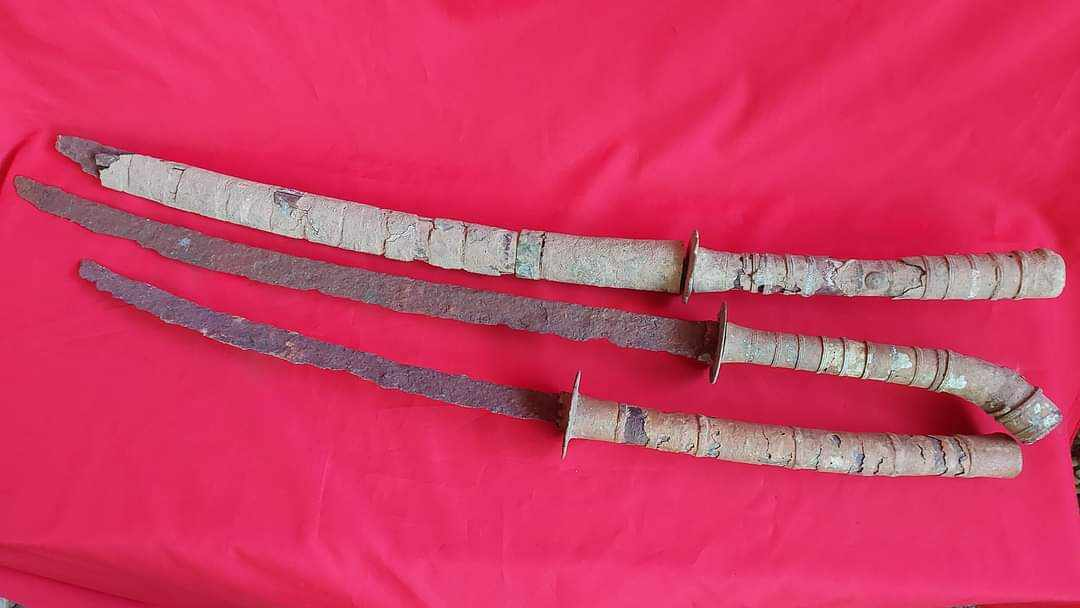.jpeg)
A Sword of Champa
October 14, 2023 Asian Arms
The kingdoms of the Chams, or Champa, are one of the least understood and least popularised regions and cultures in Southeast Asia. While the Indic influenced Khmer Kingdom is well known and Angkor Wat stands as a "wonder of the world" the equally Indian influenced Cham civilisation is relatively unknown. The Khmer and Cham were frequent rivals and had a long history of conflict until the dominant northern Dai Viet destroyed and dispersed the Cham throughout the southern coasts of Southeast Asia. Only memories remain of this once major regional force, in the form of temples and towers.

Poshanu Cham Tower (source: muine-explorer.com)
Due to their geographic location the Cham were known as outstanding traders and seamen but also showed a great degree of cultural adaptation. Originally following Hindu religious practices, they gradually converted to Islam over the course of the 11th to 16th centuries, following a pattern observed on the Malay and Indonesian territories. The Cham were also valued sailors and warriors in the wider Southeast Asian context, with significant populations appearing in Ayutthaya and other areas.
The dispersion and adaptability of the Cham greatly complicates researching the history of their weaponry. Pictorial history includes fairly specific base reliefs in Khmer empire era temples, but relatively little is known in following centuries. Different migration patterns, shifting allegiances, and the establishment of expatriate communities who quickly assimilated into their host cultures further complicates any attempt to label and identify Cham sword forms.
With that caveat, certain examples exist that we can, with some degree of specificity, attribute to the Cham do exist. This sword is one of them, it combines a degree of Viet design elements with a blade that does not fall into the typical classification of the type.
.jpeg)
The hilt differs greatly from other Southeast Asian swords as the grip is oval instead of round. The ribbed ferrules are consistent with pole-arms in Vietnam as well as the extant bronze band, which would have been used to secure an organic grip element.
.jpeg)
Unlike neighboring Laotian designs the the guard is thin and the blade has a relatively small spin, however the point of balance and the natural rotation point and grip of the sword is reminiscent of dha/daab.

The construction appears to rely on compression fit, rather than resin, again an indicator of a different heritage to other Southeast Asian swords.
.jpeg)
The quality of the steel however is fairly good, with some flex in the blade and shows signs of repeated sharpening over its lifetime.
Unlike the Khmer civilisation, depictions of weapons in surviving Cham art and architecture are rare to nonexistent leaving our understanding of Cham martial culture devoid of any pictorial context. However I am aware of a similar sword which has been preserved in a Cham family for generations. However I am unable to publish it at this time. The only other depictions we have of Cham weaponry are swords, typically in relic condition dating from the Tay Son period where the Cham sided largely with the Tay Son rebels. These swords have similar fittings as the example examined here. 
With a similar thin guard, banded brass and in the case of one of the pictured examples a similar pin in the middle of the handle and cutout shapes of the opposing brass fittings.

The blades appear to be of a similar style, with relatively thin spines compared to neighbouring Laotian dha/daab. This then was used at least during the 18th century if not further back and allows us to safely date the main example of this article to the mid to late 18th century. These swords have also been found afar afield as Thailand due to the wide ranging campaigns of the 18th century across Southeast Asia, during the tumultuous campaigns of the struggle between Tay Son, Le dynasty, Nguyễn lords and Siam.